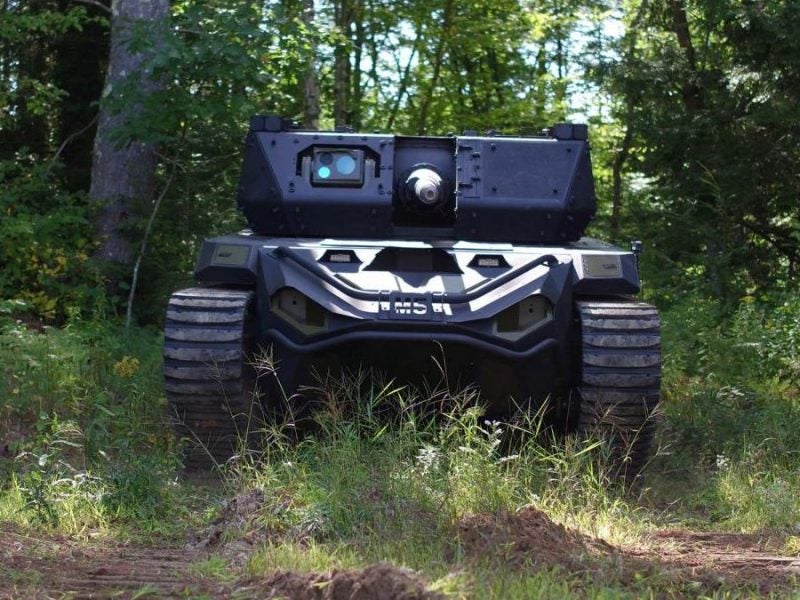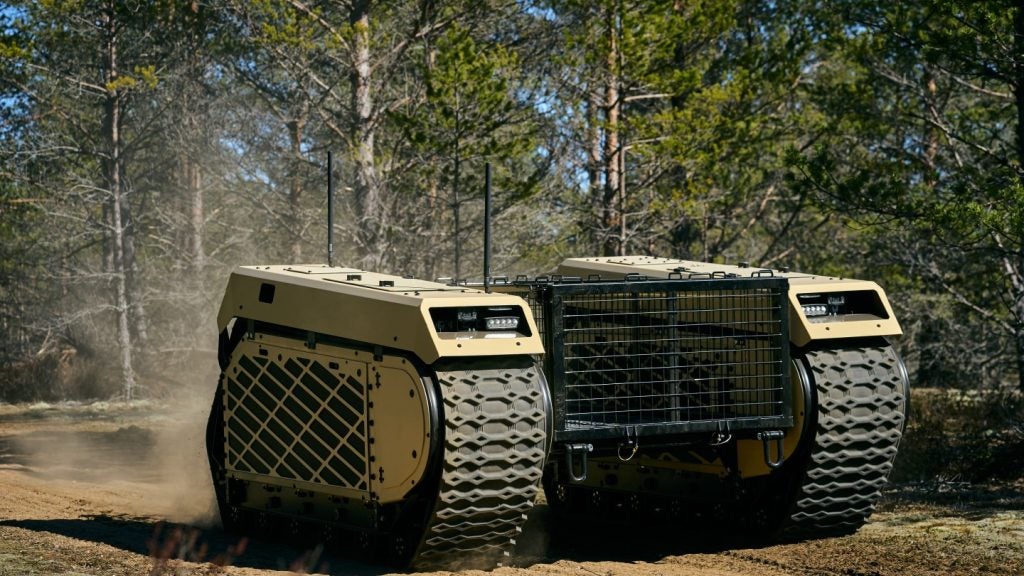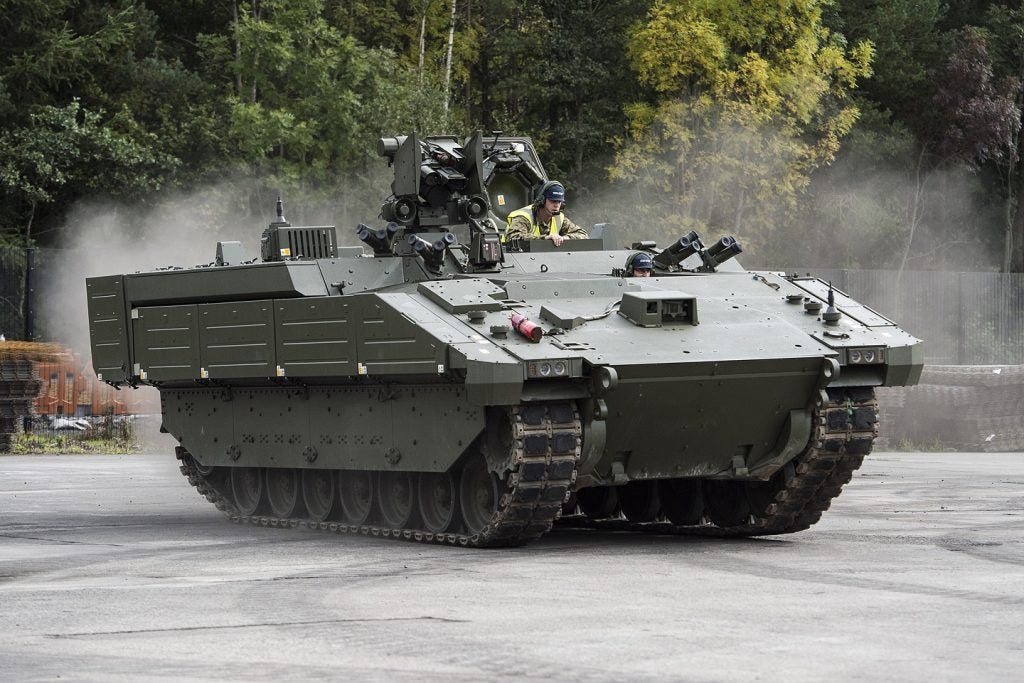
Textron Systems has unveiled its offering for the US Army’s Robotic Combat Vehicle (RCV) programme at the ongoing Association of the United States Army (AUSA) Annual Meeting in Washington DC.
The company has developed the Ripsaw M5 for the competition which Textron says ‘delivers aggressive mobility and modularity for multiple missions’.
The vehicle, developed in collaboration with FLIR Systems – makers of the Black Hornet micro unmanned aerial vehicle (UAV) – and Howe & Howe uses FLIR systems technology to get a 360-degree image of its surroundings and can carry a range of payloads including a medium-calibre cannon, Javelin missile, and mine-clearing equipment.
Announcing the vehicle Textron wrote: “The team has invested up-front in key technologies to demonstrate that the Ripsaw M5 is mission ready to provide the US Army confident execution with uncompromising technology, including real-time situational awareness systems, remote weapons stations and terrain engagement systems.”
FLIR Systems’ government and defence business unit president David Ray said: “Incorporating our world-class intelligent sensors and unmanned assets on the Ripsaw M5 will provide a leap-ahead technology solution for the Army.
“From cameras delivering 360-degree situational awareness to surveillance gimbals, tethered drones and ground robots, we’ll give our troops a tactical edge by keeping them on technology’s edge.”
How well do you really know your competitors?
Access the most comprehensive Company Profiles on the market, powered by GlobalData. Save hours of research. Gain competitive edge.

Thank you!
Your download email will arrive shortly
Not ready to buy yet? Download a free sample
We are confident about the unique quality of our Company Profiles. However, we want you to make the most beneficial decision for your business, so we offer a free sample that you can download by submitting the below form
By GlobalDataA video released by Textron shows a small UAV being deployed from the system giving the vehicle enhanced ISR capabilities.
Unmanned ground vehicles (UGVs) present the army with unique opportunities to boost survivability and lethality by employing larger-calibre weapons while also keeping personnel out of harm’s way. UGVS also tend to be lighter and smaller than conventional main battle tanks and armoured vehicles as they do not need to transport personnel.
Textron Systems President and CEO Lisa Atherton said: “Bringing together Howe & Howe, Textron Systems and FLIR Systems really represents a dream team.
“We formed this team based on our shared focus to serve this customer with disruptive ideas and proven experience, and we are dedicated to meeting and exceeding their requirements through the RCV program. We are confident that the Ripsaw M5 is their ideal wingman, and that we can get these vehicles out into the field where they need them – quickly.”
Textron was not the only company to show off heavily armed robotic vehicles at AUSA; BAE Systems also used the event to unveil its Robotic Vehicle Demonstrator equipped with a 30mm cannon.
The US Army is currently undergoing a cross-domain push to develop and field a range of unmanned solutions. These include the SeaHunter unmanned surface vessel (USV) and plans from the US Navy for an optionally-manned corvette-sized USV.
The US Army is also in the process of running its optionally-manned fighting vehicle programme which will replace the Bradley infantry fighting vehicle which would facilitate manned and unmanned operation.
On the aerial front, the US Air Force has for many years used UAVs in ISR and offensive capacities and is currently investing heavily into adding more automation into these technologies.





